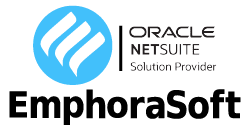
How to Optimize Inventory Turnover with NetSuite’s Demand Planning Features
Effective inventory management is critical for any product-based business looking to maximize profitability and streamline operations. One of the most important metrics to track and optimize is inventory turnover – the rate at which a company sells and replaces its stock of goods. A higher inventory turnover generally indicates that a business is selling goods quickly and has an efficient supply chain and inventory management processes in place. On the flip side, a low turnover implies weak sales, excess inventory, and suboptimal use of working capital.
This is where NetSuite’s powerful demand planning and inventory management features come into play. By leveraging NetSuite’s advanced toolset, businesses can forecast demand more accurately, optimize inventory levels, automate replenishment, and ultimately improve their inventory turnover ratios. In this post, we’ll explore some key strategies and best practices for using NetSuite to enhance your inventory management and boost turnover.
Understanding Inventory Turnover
Before diving into the specific NetSuite features and tactics, let’s first make sure we have a solid grasp on what inventory turnover is and why it matters so much. In simple terms, inventory turnover measures how many times a company sells and replaces its entire inventory over a given period, usually a year. The formula is:
Inventory Turnover = Cost of Goods Sold (COGS) / Average Inventory
For example, let’s say a sporting goods store sold $1 million worth of merchandise over the past 12 months. On average, they held $250,000 in inventory at any given point during that span. Their inventory turnover would be:
$1,000,000 / $250,000 = 4
This means they sold through their inventory 4 times over the course of the year. Is that good or bad? It depends on the industry and particular business. But in general, a higher turnover indicates several positives:
– Strong product demand and sales velocity
– Efficiently managing inventory levels to meet demand without stockpiling excess
– Less cash tied up in slow-moving inventory
– Lower carrying costs (storage, insurance, obsolescence, etc.)
– Fresher, up-to-date stock that matches current customer preferences
Of course, you don’t want turnover too high either, or you risk frequent stockouts and lost sales. Every business needs to find its optimal balance based on the nature of its products, suppliers, sales channels, and customer expectations. But for most, higher is better than lower within reason.
The Role of Demand Planning
One of the core aspects of improving inventory turnover is demand planning – the practice of forecasting customer demand to inform inventory and supply chain decisions. NetSuite offers a robust suite of demand planning features to help businesses predict future sales more accurately and optimize inventory accordingly.
At the heart of NetSuite’s demand planning functionality is its sales forecasting engine. It analyzes historical sales data, seasonal trends, growth trajectories, and other variables to generate detailed demand projections. These forecasts can be generated at various levels – by item, class, location, customer type, etc. – providing granular insights to guide planning.
Based on the forecasted demand, NetSuite then recommends optimal inventory levels and replenishment plans. This includes factoring in lead times, safety stock buffers, reorder points, economic order quantities, and more. By algorithmically analyzing all these variables, the system takes the guesswork out of deciding what to order when.
Furthermore, these demand plans automatically flow into NetSuite’s purchasing and inventory management modules. Purchase orders can be automatically generated to maintain optimal stock levels based on the plans. Inventory counts and transactions are updated in real-time as sales occur and new stock is received. This tight integration ensures that demand planning translates directly into optimized inventory management on the ground.
Analytics and KPIs
In addition to core demand planning and automation features, NetSuite provides a wealth of reporting and analytics to help you track inventory turnover and other key metrics. Turnover, days sales of inventory, GMROI, and other KPIs can be monitored via pre-built and custom reports and dashboards.
These analytics give you visibility into which product lines and categories are outperforming in terms of turning over inventory efficiently.You can compare performance across locations, channels, time periods, and more. By identifying areas of strength and weakness, you can make targeted improvements to further optimize turnover.
Leveraging NetSuite’s real-time, multi-dimensional inventory reporting in conjunction with demand planning enables you to continuously monitor and refine your inventory management approach. You can set turnover targets and measure progress against them, tying performance to financial goals.
Preventing Stockouts and Overstock
Stockouts and excess inventory are two of the biggest culprits that drag down inventory turnover. Customers can’t buy what you don’t have in stock, which hits the numerator (COGS) of the turnover equation. And inventory lingering on shelves bogs down the denominator (average inventory). NetSuite helps on both fronts.
On the stockout side, NetSuite’s safety stock and reorder point planning features help ensure you always have critical items on hand. Using historical demand volatility and lead time data, the system recommends optimal safety stock levels to buffer against unexpected demand spikes or supply chain disruptions. Properly configured, these buffers greatly reduce the risk of stockouts.
When it comes to preventing overstock, NetSuite’s demand-driven replenishment functionality is key. By continuously monitoring demand signals and automatically generating purchase orders to maintain target stock levels, the system helps avoid ordering too much of slow-moving items. Businesses can also leverage NetSuite’s Inventory Status feature to identify stale and excess stock to be liquidated or removed.
Of course, demand planning is not a perfect science. There will always be some deviation between forecasts and actual sales. But by relying on NetSuite’s sophisticated algorithms and real-time data, businesses can minimize instances of both understocking and overstocking, keeping inventory turning over at an optimal pace.
Intelligent Replenishment Strategies
NetSuite’s intelligent reordering and replenishment capabilities allow businesses to fine-tune when and how much stock to order based on a variety of important factors:
First and foremost, NetSuite replenishment takes into account the aforementioned demand plans to ensure future order quantities are in sync with forecasted sales volume. But the system also looks at historical demand volatility and variability in lead times to build in appropriate safety stock cushions.
NetSuite also allows you to set different reordering parameters for different types of products based on their demand patterns, value, physical characteristics, and other attributes. Items can be segmented into categories like high-runners, slow-movers, seasonal goods, highly erratic items, etc. – each with its own replenishment rules and thresholds.
This enables a more nuanced approach to reordering that aligns with the unique dynamics of each product. High-volume, fast-moving items may warrant more aggressive replenishment to keep up with demand and maximize turnover. Slower-selling products might be reordered less frequently and in smaller batches to avoid overstocking.
NetSuite can even recommend dynamic reorder points and economic order quantities based on real-time data. Rather than relying on static thresholds, the system continually recalculates optimal reorder parameters as conditions change, ensuring you’re always ordering the right amount at the right time.
By intelligently automating and optimizing replenishment in this way, businesses can keep a steady inflow of stock synchronized with demand, without burdening the supply chain with extreme volatility in order patterns. The result is more efficient operations, lower carrying costs, and ultimately higher inventory turnover ratios and GMROI.
Advanced Supply Chain Optimization
For larger or more complex businesses, NetSuite offers additional supply chain planning capabilities that enable even greater inventory performance.
At a foundational level, NetSuite supports multi-echelon inventory planning across a network of warehouses and distribution centers. Rather than looking at each node independently, the system optimizes stocking and replenishment holistically across the entire supply chain to maximize inventory pooling and reduce duplication. This helps determine where to position inventory to most effectively meet demand with minimal waste and overhead.
Furthermore, NetSuite’s Supply Planning module helps businesses optimize production schedules, allocation of constrained resources, and upstream procurement from vendors and contract manufacturers. By synchronizing manufacturing and purchasing plans with demand forecasts, businesses can ensure a leaner and more efficient inbound supply chain tuned to actual customer needs.
For products with a short shelf life, rapid obsolescence, or other risk factors, NetSuite can also apply additional algorithms to factor perishability and spoilage into stocking decisions. Items can be optimally positioned and replenished to ensure sell-through of inventory before any degradation in value occurs.
Ultimately, the goal is to orchestrate a nimble, demand-driven supply network with enough responsiveness and flexibility to adapt to changing conditions. By aligning ordering, production, and allocation with real-time demand signals and variability, businesses can operate at higher velocity.This not only elevates inventory turnover, but also boosts perfect order rates, fill rates, and other key metrics that drive a more profitable and customer-centric supply chain.
Real-Time Visibility and Collaboration
As powerful as data-driven demand planning and automated replenishment logic are, nothing beats human intelligence and collaboration. NetSuite empowers people across the business to contribute value-added insights, overrides, and decisions on top of system-generated plans and recommendations.
Through customizable alerts, notifications, and exception reporting, planners and managers are proactively informed of key events and deviations that may warrant additional scrutiny. This could include large variances between forecasts and actuals, unusual demand spikes or dips, potential stockout risks, supply shortages, and more.
Planners can drill down into these real-time insights through interactive reports and dashboards to understand root causes and assess impacts. They can make manual overrides to parameters like forecasts, reorder quantities, stock targets, and lead times to refine plans based on their domain knowledge.
Stakeholders across sales, operations, finance, manufacturing, and procurement can also collaborate on demand planning and replenishment via shared workspaces and embedded communication tools. Sales reps may input opportunities or risk into the forecast, suppliers may provide updates on lead times or capacity constraints, marketing can share promotion plans, and so on.
NetSuite makes all this real-time data and collaborative insight available in one unified platform, providing a single source of truth for decision-making. Rather than disconnected spreadsheets and siloed discussions, all relevant information and stakeholders are synchronized within NetSuite.
This enables faster, better-informed, and more coordinated actions to capitalize on opportunities and solve problems impacting inventory performance in real time. The business as a whole can become more agile and responsive, nimbly making smart inventory and supply chain decisions on the fly.
The Payoff: Improved Inventory Turnover and Financial Performance
So what does all this demand planning sophistication ultimately achieve? When done right, a significant boost to inventory turnover, margins, and return on capital.
NetSuite’s own internal analysis of 1500 wholesale distribution customers shows a direct correlation between demand planning prowess and inventory efficiency metrics:
– Companies using 5 or more demand planning KPIs saw 10-30% higher inventory turnover
– Businesses that generate at least 50% of their purchase orders from demand-driven reorder points and lead times outperform peers by 4-14 turns
– Firms with optimized safety stock levels show average service levels in the mid-high 90s
– Average GMROI is 25-30% higher for distributors excelling at demand planning
Beyond the numbers, the organizational benefits are just as impactful. Automating routine planning and replenishment tasks frees up significant time and mental energy for employees to focus on higher-value strategic activities. They can spend their days optimizing the supply chain and partnering with stakeholders rather than cranking out error-prone manual reorders.
Finance gains much more predictable and efficient use of working capital, since less cash is perpetually locked up in languishing inventory. With more of the inflow and outflow automated around demand, they can focus on strategic investment decisions.
And most importantly, customers receive a superior experience marked by higher in-stocks, faster and more accurate fulfillment, and fresher inventory. That’s the ultimate reward of high inventory turnover powered by demand planning – the ability to consistently delight buyers and solidify your competitive position.
Getting Started with NetSuite Demand Planning
If you’re not yet taking advantage of NetSuite’s rich demand planning functionality to optimize inventory turnover, there’s no better time than now to start. But where to begin?
First, review your current inventory management processes and assess where you have gaps in terms of forecasting, replenishment, analytics, automation, and collaboration. Make a prioritized list of pain points and opportunities to improve inventory performance.
Next, engage your NetSuite partner or professional services team to help map those priorities to the specific tools and best practices that can move the needle for your business. Develop a phased implementation plan to incrementally introduce the most impactful demand planning features over time.
Some common initial steps include:
- Configuring your item master with key planning parameters like reorder points, lead times, demand variability, etc.
- Defining core demand planning settings like forecast methods, aggregation levels, time buckets, and error tolerances
- Integrating sales and marketing data to support baseline and causal forecasting
- Activating intelligent replenishment features like supply planning algorithms and exception-based reordering
- Building dashboards and alerts to track inventory turnover, stockouts, GMROI, and other vital KPIs
Start simple and gradually layer on more sophistication as you gain experience and see results. Take advantage of training and education resources from NetSuite to build team skills and adoption. And don’t hesitate to tap into the wisdom of other NetSuite customers and experts to accelerate your success.
With the right strategy, tools, and execution, you can transform inventory management from a source of friction to a driver of competitive advantage. By harnessing the power of NetSuite demand planning, you’ll optimize inventory turnover, unlock working capital, and position your business to thrive no matter what the future holds.
Get in Touch
We know what NetSuite can do and how it can help you. Schedule your free NetSuite assessment today
FAQs:
Inventory turnover is a metric that measures how often a company sells and replaces its inventory over a specific period, typically a year. It is calculated as:
Inventory Turnover = Cost of Goods Sold (COGS) / Average Inventory.
High inventory turnover indicates strong sales, efficient inventory management, and reduced carrying costs. Conversely, low turnover signals weak sales and excess inventory, leading to higher storage costs and potential obsolescence.
NetSuite’s demand planning features enable businesses to forecast demand accurately, optimize inventory levels, and automate replenishment processes. These capabilities ensure inventory levels are aligned with sales patterns, reducing the risk of stockouts and overstock, which helps boost inventory turnover ratios.
NetSuite’s demand planning module includes a sales forecasting engine that analyzes historical sales data, seasonal trends, and growth patterns. The system generates detailed demand projections at various levels, such as by item, location, or customer type, providing granular insights for effective planning.
NetSuite uses safety stock buffers and reorder point planning to prevent stockouts, ensuring critical items are always available. For overstock prevention, demand-driven replenishment automatically adjusts purchase orders based on real-time demand signals, avoiding excess inventory of slow-moving items.
Yes, NetSuite allows businesses to segment products based on characteristics like demand patterns and value. For example, high-demand products can have more aggressive replenishment rules, while slower-moving items can follow more conservative replenishment thresholds.
NetSuite seamlessly integrates demand forecasts into its purchasing and inventory modules. This integration enables automatic generation of purchase orders based on demand plans, with real-time updates to inventory counts and transactions as stock is sold or received.
NetSuite offers pre-built and customizable reports and dashboards to track key metrics like inventory turnover, days sales of inventory (DSI), and gross margin return on investment (GMROI). These analytics help businesses identify strengths and weaknesses in their inventory management strategies.
NetSuite dynamically recalculates reorder points and economic order quantities based on real-time data, including sales trends and lead time variability. This ensures businesses order the right amount at the right time, reducing manual errors and inefficiencies.
NetSuite fosters collaboration through real-time data sharing and alerts across teams. Stakeholders in sales, marketing, procurement, and operations can contribute insights to refine demand forecasts and inventory strategies, enhancing decision-making.
To get started, businesses should evaluate their current inventory management processes to identify gaps. Implementing NetSuite’s demand planning features involves setting up demand forecasts, defining safety stock levels, and automating replenishment processes. Training and integrating these tools with existing workflows ensure a smooth transition.








